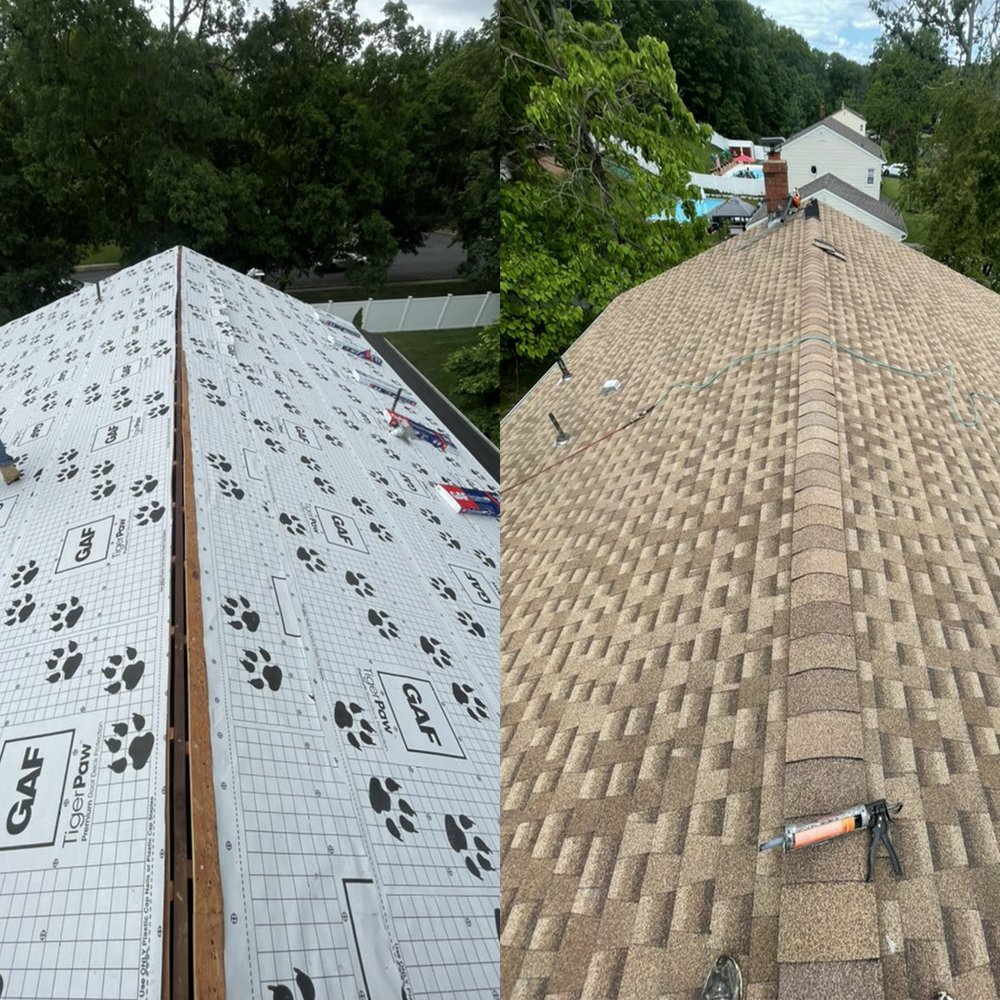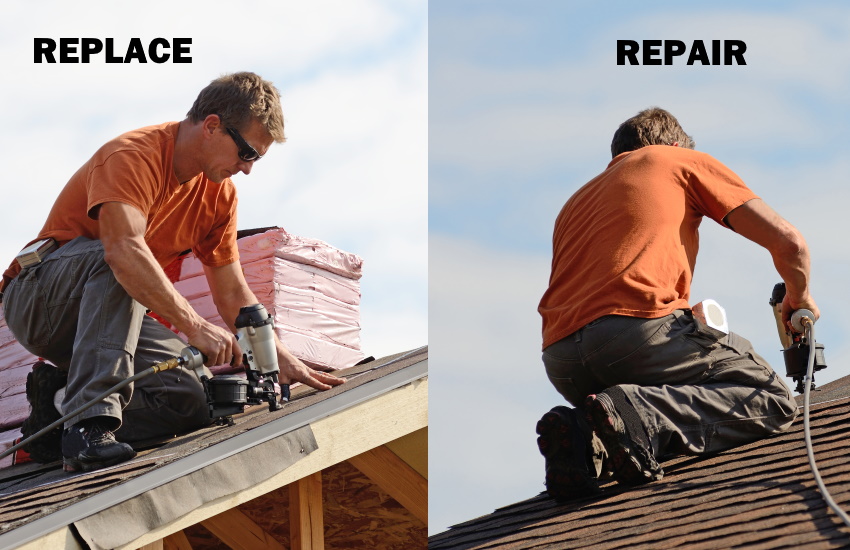Roofing Companies Oahu: Trusted Professionals for Your Roofing Demands
Roofing Companies Oahu: Trusted Professionals for Your Roofing Demands
Blog Article
Comprehending the Different Kinds of Roof Coverings: A Comprehensive Guide for Homeowners
With a variety of choices-- ranging from the traditional gable to the modern level-- each type presents one-of-a-kind advantages and challenges that need to align with the home owner's ecological considerations and particular needs. As we check out the details of numerous roof kinds, it becomes noticeable that one dimension does not fit all; the ideal choice may surprise you.
Gable Roof Coverings
Gable roof coverings, defined by their triangular shape, are among the most prominent roof designs because of their simplicity and performance in shedding water and snow. This layout includes two sloping sides that fulfill at a ridge, permitting effective drainage and decreasing the danger of water build-up. The high pitch commonly associated with saddleback roofs improves their ability to take care of heavy precipitation, making them suitable for numerous climates.
In addition to their practical advantages, gable roofs use visual versatility. They can be adapted to numerous architectural designs, from traditional to modern homes. The layout can additionally accommodate added attributes such as dormer windows, which boost natural light and ventilation in the attic space.
Additionally, saddleback roofs offer sufficient area for insulation, adding to power performance. Homeowners can pick from a variety of roof covering materials, including asphalt shingles, metal, and floor tiles, even more enhancing personalization alternatives.
Regardless of their advantages, gable roofs may need added support in locations susceptible to high winds or hefty snowfall. Overall, the saddleback roof continues to be a preferred option due to its mix of functionality, toughness, and visual charm.
Apartment Roofs
Flat roof coverings are often recognized for their minimalist layout and practical applications, particularly in industrial and commercial setups (oahu roofing). These roofing systems feature a nearly straight or horizontal surface area, which enables easy construction and versatile area application. While they might lack the aesthetic appeal of pitched roof coverings, level roofs offer countless benefits, particularly in city environments where making best use of room is important
One of the primary benefits of flat roof coverings is their ease of access. Home owners can make use of the roof covering area for different objectives, such as roof yards, balconies, or photovoltaic panel installations. Furthermore, level roofings are usually much more cost-efficient to keep and install contrasted to their sloped equivalents, as they need fewer products and labor.
Typical products used for level roofings include built-up roof (BUR), customized bitumen, and single-ply membranes, each offering unique benefits. In general, level roofings serve as a adaptable and useful option for numerous homeowners and companies alike.
Hip Roofing Systems
Hip roofing systems are defined by their sloped sides that assemble on top, developing a ridge. This layout is distinctive from saddleback roofs, as all four sides of a hip roof covering slope downwards towards the wall surfaces, giving a much more stable structure. The angle of the inclines can differ, permitting adaptability in architectural visual appeals and functionality.
One of the primary advantages of hip roofing systems is their capability to withstand heavy winds and adverse weather problems. The sloped surface areas enable better water drainage, lowering the danger of leaks and water damage. Furthermore, hip roofing systems offer enhanced attic room, which can be made use of for storage or perhaps exchanged comfortable locations.
Nonetheless, building a hip roofing system can be a lot more intricate and expensive than less complex roof covering types, such as gable roofs. The additional material and labor associated with creating the slopes and guaranteeing correct architectural stability can result in greater costs. In spite of these drawbacks, numerous property owners prefer hip roofs for their toughness, visual appeal, and capacity for energy performance.
Mansard Roof Coverings
Mansard roofs, commonly recognized by their distinct four-sided design, attribute 2 slopes on each side, with the reduced slope being steeper than the upper. This building style, originating from France in the 17th century, is not just cosmetically attractive however practical, as it makes best use of the useful area in the top floors of a building. The high reduced slope permits more clearance, making it an excellent selection for attic rooms or lofts, which can be exchanged living areas.
Mansard roofings are characterized by their adaptability, accommodating different architectural designs, from traditional to modern-day. They can be constructed with various materials, consisting of asphalt shingles, slate, or steel, supplying home owners with a range of alternatives to match their choices and budget plans. Furthermore, the design allows for the integration of dormer home windows, enhancing all-natural light and ventilation in the upper levels.
However, it is necessary to think about the prospective downsides. Mansard roofings might require even more maintenance due to the complexity of their design, and their steep inclines can be testing for snow and rainfall runoff. On the whole, mansard roofs integrate beauty with practicality, making them a prominent selection among house owners looking for unique architectural features.
Lost Roofing Systems
As property owners progressively look for simpleness and performance in their architectural designs, shed roof coverings have arised as a prominent selection. Defined by a solitary sloping airplane, a shed roofing offers a minimalist aesthetic that complements various home designs, from modern to rustic.
Among the key benefits of a shed roof covering is its straightforward construction, which usually translates to reduce labor and product expenses. This site style permits effective water drain, minimizing the danger of leakages and water damages. Furthermore, the upright slope offers adequate room for skylights, boosting all-natural light within the interior.
Shed roof coverings likewise supply flexibility in terms of usage. They can be successfully integrated right into enhancements, garages, or outside structures like structures and sheds. Furthermore, this roofing system design can suit numerous roofing materials, including steel, asphalt roof shingles, or also environment-friendly roofs, lining up with environmentally friendly campaigns.
Nevertheless, it is necessary to consider regional climate conditions, as heavy snow lots may demand adjustments to the roof covering's angle or framework. On the whole, lost roofs present a functional and cosmetically pleasing choice for home owners seeking to make best use of functionality without compromising design.
Final Thought


Gable roof coverings, defined by their triangular form, are amongst the most prominent roofing designs due to their simplicity and effectiveness in dropping water and snow. useful content oahu roofing. The steep pitch frequently connected with gable roofs enhances their capacity to handle hefty precipitation, making them suitable for various environments
While they might lack the aesthetic charm of pitched roofs, flat roof coverings offer various benefits, especially in city atmospheres where taking full advantage of area is vital.

Report this page